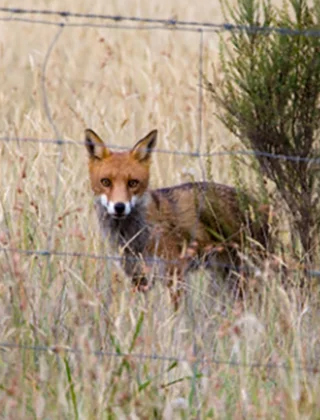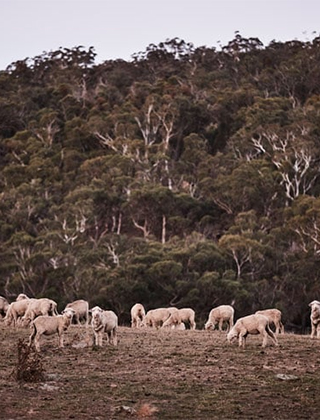Welcome to Australian Wool Innovation, a hub for the woolgrowers of Australia.
Not a woolgrower? Looking for information about wool products, wool care or wool processing?
The Woolmark Company is the global authority on wool. Visit Woolmark.com instead.
The past decade of wild dog control in Victoria: then and now
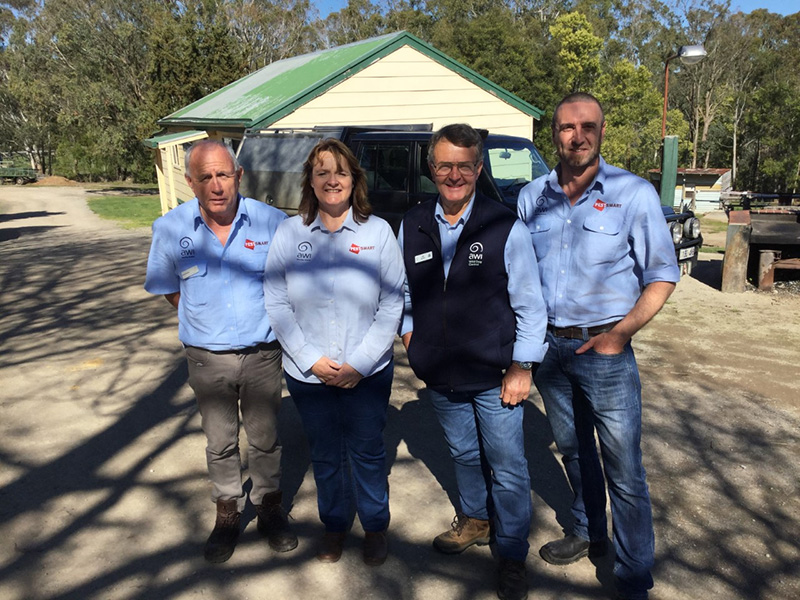
Since the setting up ten years ago of the Community Wild Dog Control Coordinator Program in Victoria, community-driven wild dog management has changed the face of wild dog control in the state for the better.
AWI-funded Victorian wild dog control coordinators Brian Dowley, Lucy-Anne Cobby and Mick Freeman, with AWI Program Manager for Vertebrate Pests Ian Evans (second from right).
Since the setting up ten years ago of the Community Wild Dog Control Coordinator Program in Victoria, community-driven wild dog management has changed the face of wild dog control in the state for the better.
It has been 10 years since AWI, the Department of Environment, Land, Water and Planning (Vic) and local communities entered into a partnership to set up the Community Wild Dog Control Coordinator Program (CWDCCP). Through the program, the wild dog coordinators, located in Gippsland and the north-east of the state, help landholders and communities work together to combat wild dog attacks. They also help coordinate on-ground wild dog control activities.
Before 2012, wild dog control in Victoria was ad hoc and was carried out on or near privately owned farmland, often in response to attacks on livestock. Many producers felt they were dealing with the problem on their own, and that other managers who did not own livestock were not taking responsibility for the wild dogs sheltering on their land.
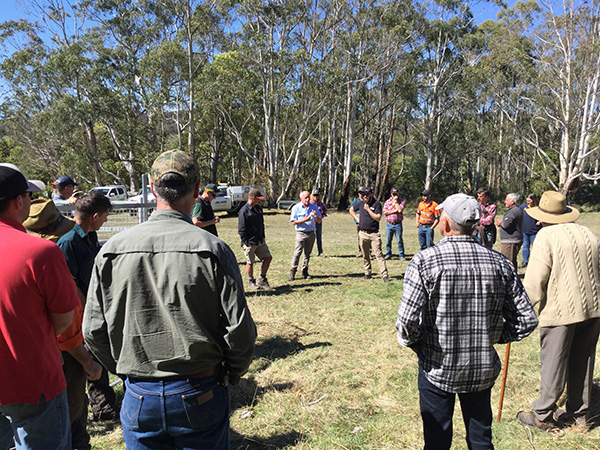
The Victorian wild dog control coordinators hard at work in the community.
The CWDCCP sought to change this through a multifaceted program that raised community awareness about the impacts of wild dogs and established a framework that encouraged and enabled all landholders to take responsibility for wild dog control.
Key aspects of the program included ongoing community consultation, use of local knowledge to plan control works, proactive and strategic control programs across private and public land and the use of all available control methods.
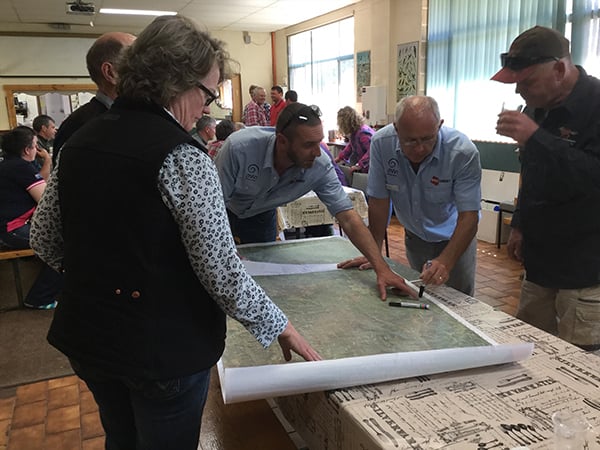
A recent survey of sheep producers involved in coordinated community wild dog control activities in Victoria showed a significant reduction in stock losses by wild dogs and also indicated substantial improvements in producers’ confidence and wellbeing.
- 91% reduction in stock losses
- 28% plan to reintroduce sheep
- 46% plan to increase sheep numbers and their wool clip
- 88% are experiencing improved mental health and wellbeing.
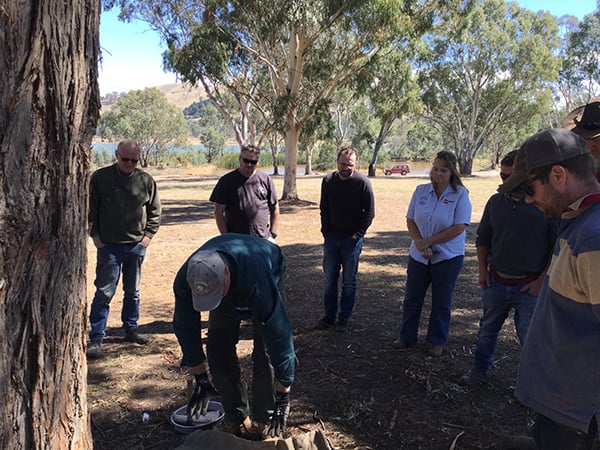
What does truly integrated wild dog control look like in Victoria? It means that:
- Communities play an active role in deciding when, where and how control works are carried out in their district.
- Control works are carried out on public and private land.
- Spring and autumn baiting programs are routine in many districts.
- All available control methods (baiting, trapping, shooting, exclusion fencing, guardian animals etc) are considered when planning control activities.
- Aerial baiting is carried out where possible.
- Producers have regular opportunities to build their skills and learn about existing and new methods of wild dog control.
- All members of the public are encouraged to report incidents of wild dog activity.
- Producers can expect timely response to reports about wild dog activity.
- Good working relationships between Wild Dog Controllers, producers and land managers.
This article appeared in the June 2022 edition of AWI’s Beyond the Bale magazine. Reproduction of the article is encouraged.






